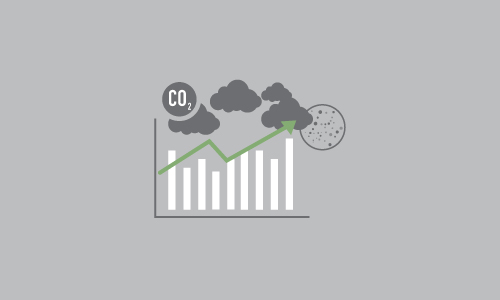The Industrial Emission Control Systems Market Report, issued by Allied Market Research, predicts the sector will amass $21,133 million by 2022. The report offers a detailed review of current behaviors and future trends within the sector, highlighting investment opportunities, market dynamics, and technological innovations. But what are the key factors driving the Global Industrial Emission Control Systems market, and what do these projections mean for the industry moving forward?

What does the report cover?
The report reviews swathes of historical and current data from all corners of the industry. Research into the production, consumption, revenue, market share, and growth rate in North America, Europe, Asia-Pacific, and LAMEA (Latin America, Middle East, and Africa) forms the basis of the report. The data is then carefully analyzed to forecast trends.
Products are split into categories to better analyze the impact of growth on each sector. Data on the production, revenue, price, market share, and growth rates of products is segmented into the following categories:
- Electrostatic precipitators (ESPs)
- Fabric filters
- Scrubbers
- Cyclone separators
- Thermal oxidizers
- Catalytic reactors
- Others
What do these projections mean for the industry?
The report places the industry’s CAGR (compound annual growth rate) at 8.2% between 2016 and 2022. This growth is due to a variety of key factors both within and outside of the sector’s control.
Increased Regulations
One of the reasons for such unprecedented growth is the increase in government regulations for industries that produce harmful pollutants. Since the Clean Air Act of 1970, the Environmental Protection Agency (EPA) has issued strict regulations on facilities that emit volatile organic compounds (VOCs) and other harmful chemicals.
Due to the growing concern surrounding climate change—and subsequent plans to lower state and national emission levels—industries have begun to reevaluate their pollution control systems. For example, California successfully reduced its overall emissions by 2016 to meet the state’s greenhouse gas (GHG) target of 1990 levels by 2020, which inspired a new, steeper target of 40% lower than 1990 levels by 2030.
ESP Development
Another key factor driving growth is the popularity of ESPs. The power industry—specifically coal and thermal power plants—accounts for the majority of emissions across all source types. These sources release high levels of VOCs into the atmosphere and must curb their emissions dramatically to meet EPA guidelines. The Industrial Emission Control Systems Market Report projected ESPs would dominate the market by 2022. This may be due to their lower operating costs and flexible temperature ranges. As a result, the industry may see a focus on complex, cost-effective filtration technology to eliminate higher levels of VOCs during the manufacturing process.
Moving Forward
As industries face stricter regulations, emission control systems must be designed to meet those limits. As technologies are continually developed, those at the forefront of custom, efficient design will fare well in the marketplace.
Although interest in renewable energy sources has increased over recent decades, the effort to retrofit and reduce emissions in current coal-fired plants has helped invigorate the emission control industry. The installation of new coal-fired plants and the increase in demand for retrofit services will continue to boost revenue for the emission control sector.
Contact The CMM Group today to learn how we can help you reduce emissions and continue growing in the industry.




